Foreign News
US government struggles to rehire nuclear safety staff it laid off days ago
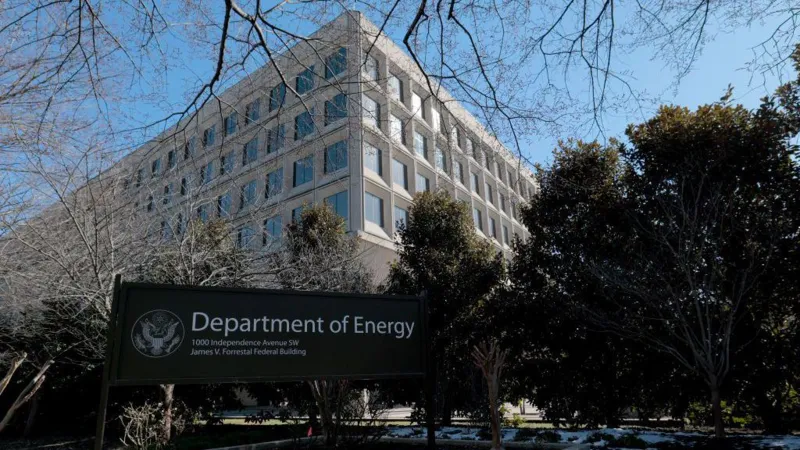
The US government is trying to bring back nuclear safety employees it fired on Thursday, but is struggling to let them know they should return to work, NBC News has reported.
The National Nuclear Security Administration workers were among hundreds of employees in the energy department who received termination letters.
An email obtained by NBC said the letters for some NNSA employees “are being rescinded, but we do not have a good way to get in touch with those personnel”.
The terminations are part of massive effort by President Donald Trump to slash the ranks of the federal workforce, a project he began on his first day in office, less than a month ago.
Last week, nearly 10,000 federal workers were let go, according to multiple US outlets.
That figure was in addition to the estimated 75,000 workers who have accepted an offer from the White House to leave voluntarily in the autumn.
The nuclear security officials who were laid off on Thursday helped oversee the nation’s stockpile of nuclear weapons. That included staff who are stationed at facilities where the weapons are built, according to CNN.
Attempting to reach the workers, the email, which was sent to current employees, said: “Please work with your supervisors to send this information (once you get it) to people’s personal contact emails.”
Trump is working to slash spending across the board, abroad and at home, and going so far as to call for eliminating the education department. He is getting help from the world’s richest man, Elon Musk, who, through an effort called Doge for Department of Government Efficiency, has sent workers to comb through data at federal agencies and helped implement the “buyout” offer.
Last week, the Trump administration ordered agencies to fire nearly all probationary employees, those who had generally been in their positions for less than a year and not yet earned job protection. That included the NNSA staff members.
Altogether, the move could potentially affect hundreds of thousands of people.
Several of the Trump administration’s efforts to shrink the government’s size and spending have been met with legal challenges.
More than 60 lawsuits have been filed against the Trump administration since the president was inaugurated on 20 January.
[BBC]
Foreign News
Pope Francis has pneumonia in both lungs, Vatican says
Pope Francis has developed pneumonia in both his lungs and his condition remains “complex”, the Vatican says.
The 88-year-old has been suffering from a respiratory infection for more than a week and was admitted to Rome’s Gemelli hospital on Friday.
“The follow-up chest CT scan which the Holy Father underwent this afternoon… demonstrated the onset of bilateral pneumonia, which required additional drug therapy,” the Vatican said.
It said lab tests, a chest X-ray and the Pope’s clinical condition “continue to present a complex picture”.
Despite this, the Vatican said the pontiff remained in “good spirits” and spent the day “reading, resting and praying”.
Pope Francis also expressed his gratitude to well-wishers and asked them to “pray for him”.
Before his admission last week, the Pope had bronchitis symptoms for several days and had delegated officials to read prepared speeches at events.
He had been due to lead several events over the weekend for the 2025 Catholic Holy Year which runs through to next January, however all public events on the Pope’s calendar have been cancelled through to Sunday.
On Monday, the Vatican said that doctors had changed the Pope’s drug therapy for the second time during his hospital stay to tackle what at the time was thought to be a “polymicrobial infection of the respiratory tract”.
The Pope is especially prone to lung infections due to developing pleurisy as an adult and having part of one of his lungs removed at age 21.
During his 12 years as leader of the Roman Catholic church, the Argentine has been hospitalised several times including in March 2023 when he spent three nights in hospital with bronchitis.
[BBC]
Foreign News
Teen dead and five injured in Austria knife attack

A 14-year-old boy has been killed and five people wounded in a knife attack in southern Austria.
Police said the suspect is a 23-year-old Syrian asylum seeker who was detained at the scene in Villach, a town near the border with Italy and Slovenia.
Police are yet to establish a motive but have involved extremism specialists in the investigation, a spokesman told BBC News.
The incident took place around 16:00 local time (15:00 GMT) near the town’s main square. Two of the five people injured were in a serious condition as of Saturday evening.
A delivery worker who had driven his vehicle at the attacker helped prevent more injuries, police said.
The driver – also a Syrian man – said he witnessed the attack as he was driving by and deliberately rammed the knifeman.
The suspect was arrested shortly after by two female police officers. As of Saturday evening, he was still being interrogated, police said.
Some witness reports initially indicated a potential second attacker, leading to police shutting down train travel in the attack’s immediate aftermath.
However, local police told BBC News they were confident only one knifeman was involved.
Austrian law means the attacker’s identity has not been released but police confirmed he is a 23-year-old Syrian man who lived locally.
He had a temporary residence permit and was waiting for a decision on his asylum application.
Police initially said four people were wounded but a fifth person later came forward with minor injuries.
The identity of the teenager who was killed has also not yet been disclosed.
The attack comes amid national debates over asylum laws and a political crisis following an election last year which saw the far-right Freedom Party come out on top for the first time.
However it had failed to form a coalition government, leaving Austria’s President Alexander Van der Bellen weighing up whether to call a snap election, form a minority government, or invite other parties or a group of experts to try and form an administration.
Herbet Kickl, the head of the Freedom Party, seized on the Villach attack, saying in a statement that Austria needs a “rigorous crackdown on asylum”.
Peter Kaiser of the centre-left Social Democratic Party – who is the governor of Carinthia, the region where Villach is located – described the attack as an “unimaginable atrocity”.
He said the stabbings should not lead to “hateful” reactions while urging the government and European Union to tighten asylum policy.
[BBC]
Foreign News
Trump’s assault on USAID leaves China soft power opening in Southeast Asia
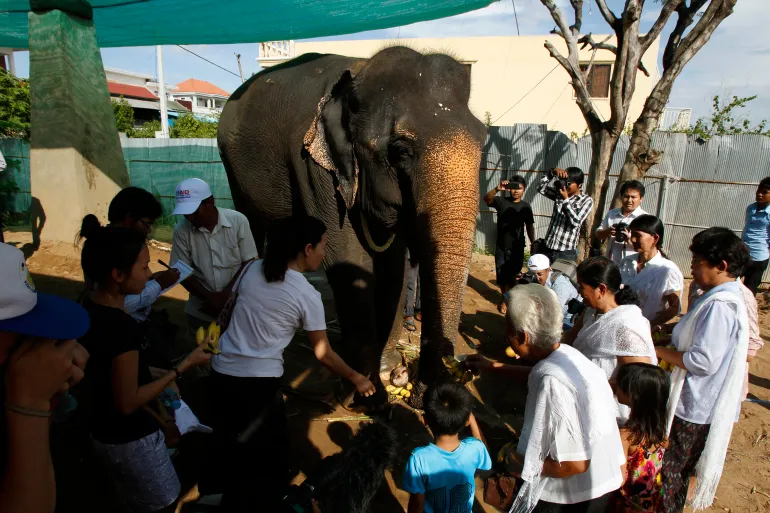
As the United States winds back humanitarian assistance in Southeast Asia, its rival China may see an opportunity to expand its influence in a region where it has directed billions of dollars in investment and aid, analysts say.
In a little over three weeks since US President Donald Trump’s inauguration, Washington has frozen nearly all foreign aid and moved to effectively abolish the US Agency for International Development (USAID), a longstanding source of soft power in the region.
USAID, the biggest disburser of US foreign aid, spent $860m in Southeast Asia alone last year, funding projects on everything from treating HIV to preserving biodiversity and strengthening local governance.
Many projects, which run primarily through grants to local NGOs, face an uncertain future as the Trump administration pulls the US back from the world stage as part of his “America first” agenda.
For Beijing, the circumstances provide an ideal opportunity for it to step in, said Yanzhong Huang, a senior fellow for global health at the Council on Foreign Relations.
“The suspension of health, education, and humanitarian programmes – key pillars of US soft power – may create vacuums that China can fill,” Huang told Al Jazeera.
“This strategic retreat could strengthen Beijing’s influence across the region, particularly in current US aid recipients like Indonesia, the Philippines, Myanmar, and Cambodia.”
As the Trump administration generated headlines with its moves to gut USAID last week, Beijing made news by stepping in with $4.4m to fund a de-mining project in Cambodia that had been left in the lurch by Washington.
Heng Ratana, head of the Cambodian Mine Action Centre, told the Khmer Times newspaper the Chinese aid would help his organisation clear more than 3,400 hectares (8,400 acres) of land filled with landmines and unexploded ordnance.
China’s embassies in the US, Cambodia and Thailand did not respond to Al Jazeera’s requests for comment.
Joshua Kurlantzick, a senior fellow for Southeast Asia and South Asia at the Council on Foreign Relations, said USAID’s demise comes as US influence in the region is waning more generally and as China scales up its public diplomacy.
Southeast Asian leaders are concerned about “chaotic policymaking” in the US, Kurlantzick told Al Jazeera, particularly in countries such as Vietnam, Indonesia and Thailand, where the US devotes significant aid and security assistance.
“Beijing is indeed already portraying the US as uncaring and unable to lead regionally or globally and I expect Beijing to increase its aid and investment now in many parts of the developing world,” Kurlantzick told Al Jazeera.
While the future of many USAID programmes in the region is unclear, some analysts believe that China is likely to leave projects with a more political or ideological focus to other partners to the region, such as the European Union, Australia, Japan or the Asian Development Project, a Manila-based regional development bank.
“China’s existing international aid or international development programme is quite sizeable. But it happens to be quite different from what USAID does in that the latter seems to be devoting a lot of resources to ideology-based initiatives, for democracy, for LGBTQ, for diversity, for inclusiveness, for climate change,” John Gong, a professor of economics at the University of International Business and Economics in Beijing, told Al Jazeera.
“Whether China is going to step into the void vacated by the United States, I am very sceptical. We are talking about different things here. And besides, I don’t think the Chinese government is keen on competing with Washington on this front,” Gong said.
China’s foreign assistance has been heavily geared towards infrastructure, as laid out in the Belt and Road Initiative (BRI), Beijing’s flagship infrastructure investment project estimated to be worth more than $1 trillion.
Other projects, such as its hospital ship Peace Ark, have provided medical assistance.
Almost all of China’s foreign aid to Southeast Asia – some 85 percent – has taken the form of non-concessional loans with a focus on energy and transport, according to Grace Stanhope, a research associate at the Lowy Institute’s Indo-Pacific Development Centre.

Beijing’s infrastructure-heavy approach has made it a visible presence in the region, albeit not always a popular one, Stanhope told Al Jazeera, due to delays and “blow-out” budgets for projects such as the East Coast Rail Link in Malaysia and Jakarta-Bandung high-speed rail line in Indonesia.
Some critics have referred to these and other projects as a form of “debt-trap” diplomacy intended to breed dependency on China, a charge Beijing has denied.
In a survey carried out by the Singapore-based Iseas Yusof-Ishak Institute last year, 59.5 percent of respondents across 10 Southeast Asian countries chose China as the most influential economic power in the region.
Just over half, however, expressed distrust of China, with 45.5 percent fearing that China could threaten their country economically or militarily. Japan was seen as the “most trusted” major power, followed by the US and the EU.
Though heavily focused on infrastructure, China has been slowly trying to shift its model of assistance towards more “soft” aid such as public health, agriculture and digitisation, said Joanne Lin, a senior fellow at the Iseas Yusof-Ishak Institute’s ASEAN studies centre in Singapore.
“The extent of China’s aid will of course depend on China’s economic ability as it is facing constraints such as its slowing growth and trade tensions with Washington which may limit its ability to replace US aid in full,” Lin told Al Jazeera.
Lin said Southeast Asian countries prefer a “diversified approach” to foreign aid and development assistance that is not dependent on a single donor – whether the US or China.
Despite its high-profile presence in Southeast Asia, China has been scaling back its development assistance in the region in recent years.
While China was the region’s top donor from 2015 to 2019, it has since slid to fourth place, according to the Lowy Institute.
Funding has similarly dried up, falling from $10bn in 2017 to $3bn in 2022, according to the think tank.
China faces its own problems at home, including slowing economic growth and high youth unemployment, that could limit its focus on affairs overseas, said Steve Balla, an associate professor of political science and international affairs at George Washington University.
“The domestic issues may serve to limit [Chinese President Xi Jinping’s] attention to international affairs. The issues with Belt and Road may limit the regime’s options for how to step into spaces left by the US,” Balla told Al Jazeera.
Bethany Allen, head of programme for China Investigations and Analysis at the Australian Strategic Policy Institute, expressed a similar sentiment.
“China is already capitalising on US disengagement in the first Trump era by deepening its economic, diplomatic and cultural influence in Southeast Asia. Initiatives like the Belt and Road Initiative, Confucius, and the Lancang-Mekong Cooperation Mechanism are tools for expanding soft power,” Allen told Al Jazeera, referring to a global programme to promote the study of Chinese language and culture, and a forum to promote cooperation between China and the Mekong subregion.
“However, China’s lowering economic growth means slowing BRI, resulting in the country’s soft power project might be less aggressive than in the past decade. High-profile debt concerns and pushback against Chinese influence [in Malaysia and Indonesia] also limit its appeal,” she said.
[Aljazeera]
-
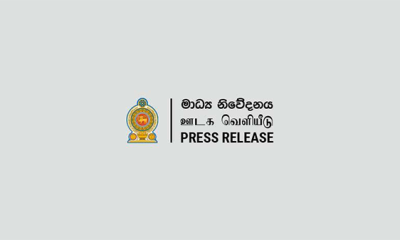
 News6 days ago
News6 days agoOracle Corporation pledges support for Sri Lanka’s digitalization
-

 Sports3 days ago
Sports3 days agoRemarkable turnaround for Sri Lanka’s ODI team
-

 Editorial6 days ago
Editorial6 days agoGroping in the dark
-

 Opinion6 days ago
Opinion6 days agoShortage of medicines: Senaka Bibile Policy is the solution
-

 Opinion6 days ago
Opinion6 days agoThe passing of Sarjana Karunakaran
-
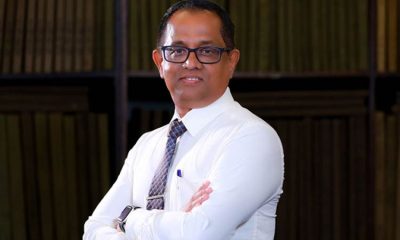
 News4 days ago
News4 days agoSpeaker agrees to probe allegations of ‘unethical funding’ by USAID
-
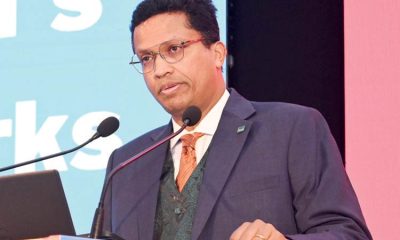
 Business3 days ago
Business3 days agoUN Global Compact Network Sri Lanka: Empowering Businesses to Lead Sustainability in 2025 & Beyond
-
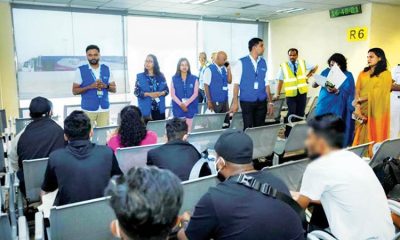
 Features3 days ago
Features3 days agoScammed and Stranded: The Dark Side of Sri Lanka’s Migration Industry










